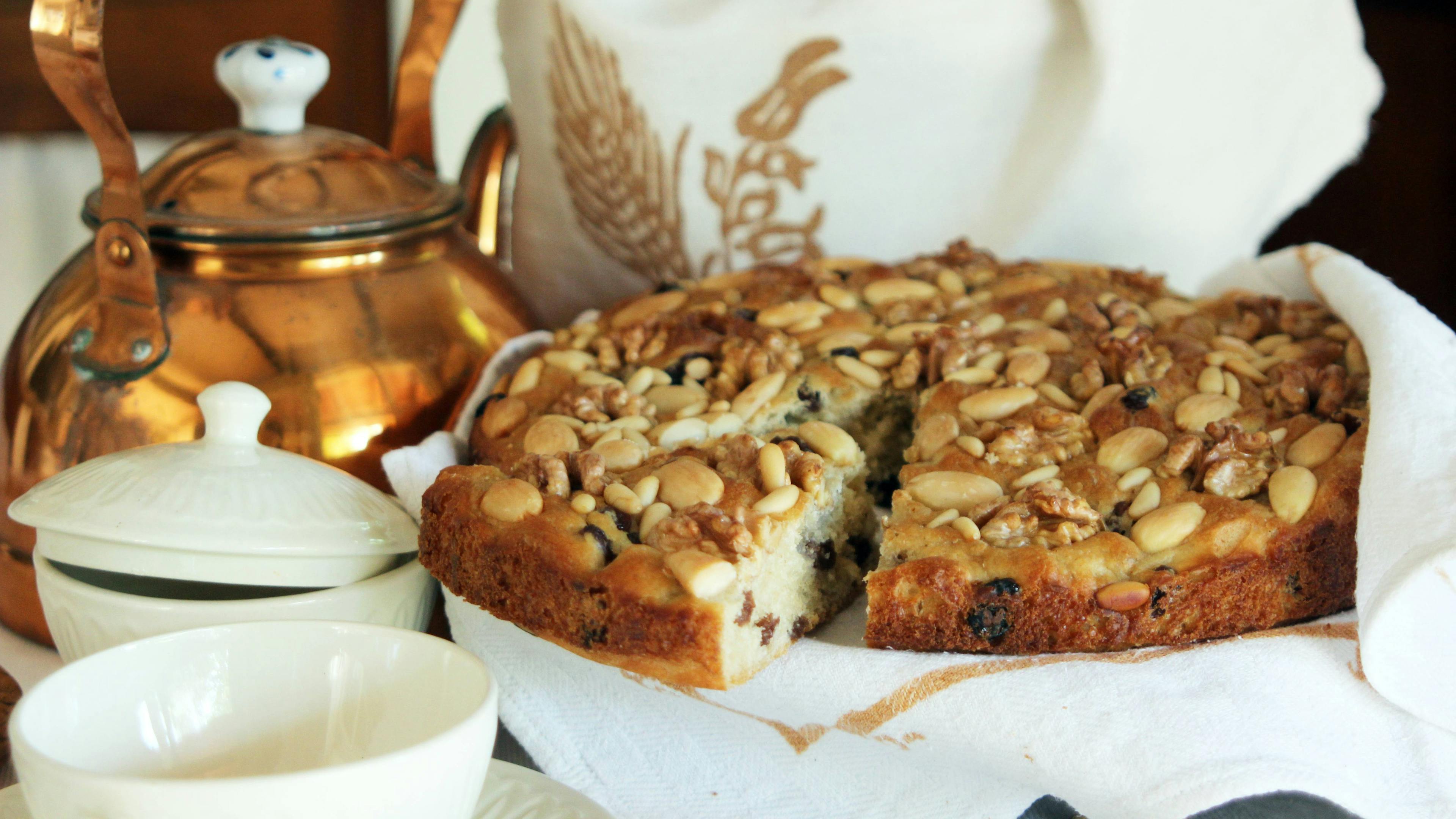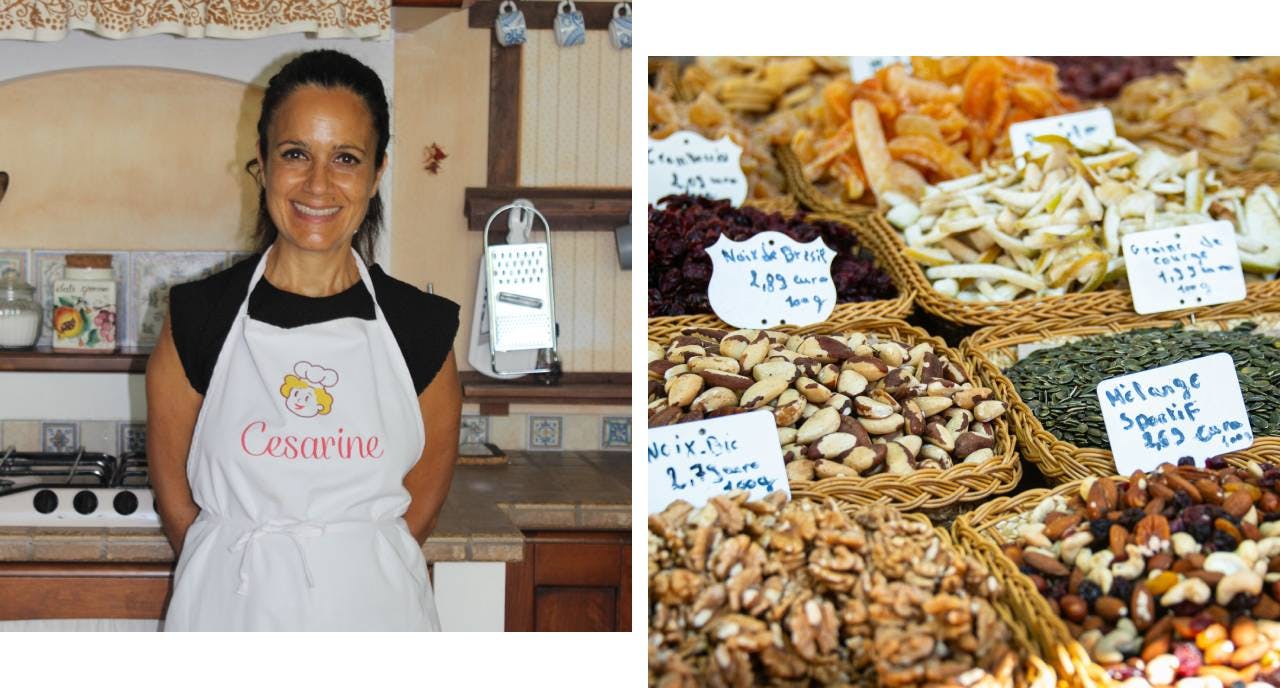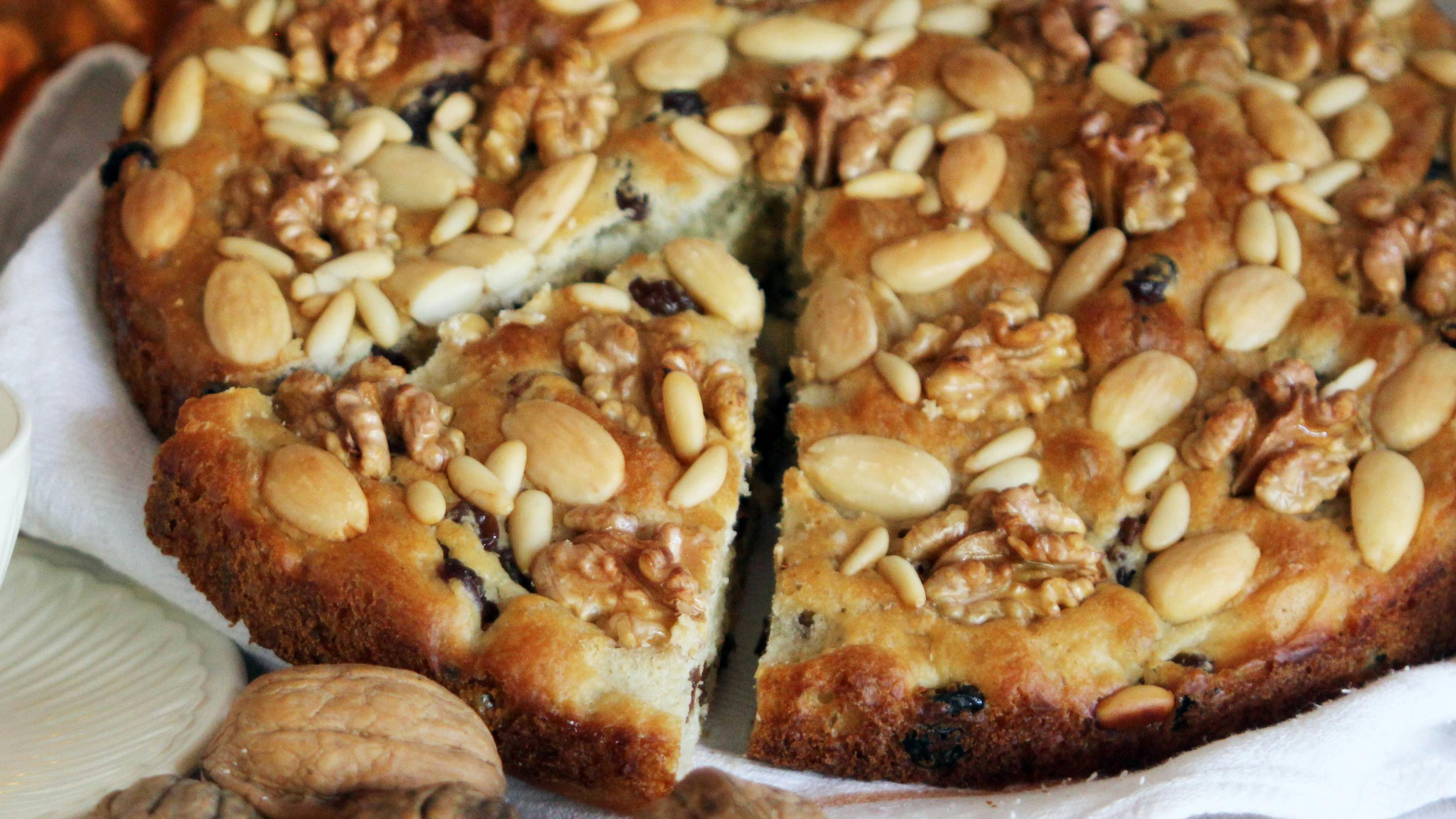

If you find yourself in Romagna in the month of November, you will most likely notice in the windows of bakeries and pastry shops a very particular dessert, easily recognizable because it is entirely covered with a shower of dried fruit: this is the Piada dei Morti. Called in the local dialect “piada di murt”, its name reveals the occasion on which it is traditionally prepared: November 2nd, the Day of the Dead.
What is the Piada dei Morti
The piada dei morti has a dough similar to brioche bread and is essentially a slightly sweet, soft focaccia enriched with dried fruit. Despite its name, it has nothing to do with the famous piadina that we usually enjoy in summer with squacquerone cheese and arugula. However, just like piadina, it is round and flat, although higher because of the leavening. There is no specific time of day to enjoy this dessert: it is perfect for breakfast, as an afternoon snack, or even at the end of a meal, perhaps accompanied by a glass of rosé wine. And since today is October 31st, Halloween, the spookiest day of the year, the piada dei morti can also be a great idea to offer children who knock on your door for the now traditional “trick or treat”.
Celtic origins of the Piada dei Morti
This reference to Halloween is no coincidence, because the origins of the piada dei morti are closely tied to this tradition. Today this dessert is typically prepared in the area around Rimini, the province of Ravenna, and the Apennine zones of Forlì and Cesena, territories that, in the 4th century BC, were occupied by Celtic tribes. For the Celts, October 31st marked the New Year, a moment when, according to their beliefs, the boundary between the world of the living and the world of the dead disappeared, allowing the souls of the departed to return to earth. To honor and appease them, people would leave food and drinks at their doorsteps, and one of those foods was a bread similar to what we now call “piada dei morti”.
The recipe for Piada dei Morti
As with many traditional recipes, there are as many variations as there are families: some use butter, others olive oil; some add honey, while others pour a glass of wine into the dough. Here we share the version of our Cesarina Patrizia from Rimini: follow it step by step and you’ll be able to bring to your table this simple yet delicious dessert typical of Romagna tradition.

“I have beautiful memories tied to this dessert. I often made it with my grandmother, and my job was to carefully and neatly arrange the walnuts, almonds, and pine nuts. I love piada dei morti because it is simple and genuine”.

Piada dei morti
A soft sweet focaccia covered in dried fruit, typical of the Romagna tradition for the Day of the Dead commemoration
Ingredients
- 125 g all-purpose flour (or Italian 0 flour)
- 125 g semi-whole wheat flour (type 1)
- 50 g sugar
- 125 g water
- 1 egg
- 50 g olive oil
- 7 g fresh brewer’s yeast
- 125 g raisins
- Zest of half an orange
For the topping:- 60 g walnuts
- 50 g almonds
- 15 g pine nuts
- 10 g sugar
- 20 g water
Method
- Soak the raisins.
- In a bowl, mix the flours, crumbled yeast, sugar, and water, stirring with a spoon.
- Add the egg and continue mixing with the spoon for 10 minutes.
- Add the salt, then incorporate the olive oil a little at a time. Finally, add the drained and dried raisins.
- Let the dough rise for at least 3 hours.
- Transfer the dough into a greased 10-inch (26 cm) round cake pan.
- Let rise again for at least 1 hour.
- Decorate with walnuts, almonds, and pine nuts, then brush the top with a sugar and water solution.
- Bake at 350°F (180°C) for 25–30 minutes.